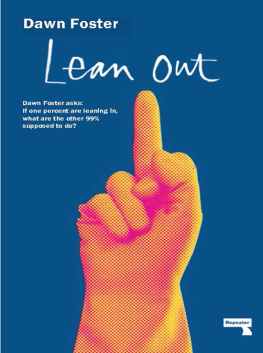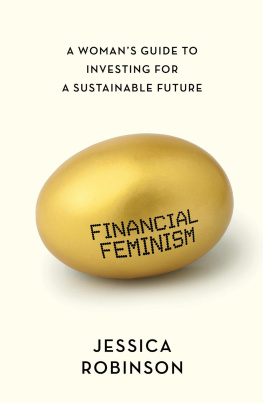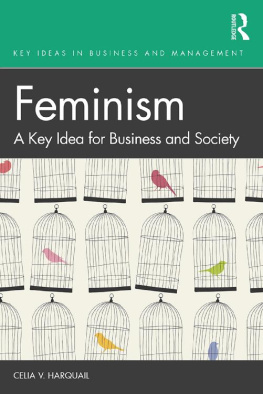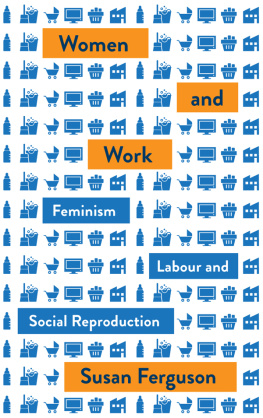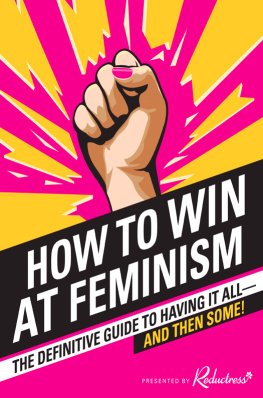Lean Out

Dawn Foster
Foreword by Nina Power

Published by Repeater Books
An imprint of Watkins Media Ltd
19-21 Cecil Court
London
WC2N 4EZ
UK
www.repeaterbooks.com
A Repeater Books paperback original 2016
1
Distributed in the United States by Random House, Inc., New York.
Copyright Dawn Foster 2015
Dawn Foster asserts the moral right to be identified as the author of this work.
Cover design: Johnny Bull
Typography and typesetting: Jan Middendorp
Typefaces: Chaparral Pro and Brandon Text
ISBN: 978-1-910924-02-0
Ebook ISBN: 978-1-910924-03-7
All rights reserved. No part of this publication may be reproduced, stored in a retrieval system, or transmitted, in any form or by any means, electronic, mechanical, photocopying, recording or otherwise, without the prior permission of the publishers.
This book is sold subject to the condition that it shall not, by way of trade or otherwise, be lent, re-sold, hired out or otherwise circulated without the publishers prior consent in any form of binding or cover other than that in which it is published and without a similar condition including this condition being imposed on the subsequent purchaser.
CONTENTS
To Kirsty Connell-Skinner
FOREWORD
Feminism, as Dawn Foster nimbly argues in Lean Out, suffers horribly from multiple claims made in its name. Criticising individualist feminism, choice feminism, corporate feminism, imperialist feminism and all the other right-wing hellspawn positions that proliferate today under its banner, Foster seeks to return to what actually matters to feminism, and what mattered all along: class, economics, poverty, race, violence, work-place struggles, childcare, policy, anti-capitalism and the role of the state. And Dawn knows what shes talking about. Her accounts of working zero hours contract jobs and her critiques of the endless Guardian-style can you be a feminist and (own monkeys? lick the end of pens? wear odd socks? etc. etc. etc.) stem from her experiences as a working class woman and a journalist (she wins prizes for her coverage of social and housing issues). I like Dawn a lot, not least because she refuses to take any shit from anyone, be it editor, man on Twitter, right-wing pundit shes arguing with on Sky or Newsnight or her friends. She reminds me of the kind of investigative journalist that has historically been extinguished under press releases and the diminution of print media. But yet still she lives!
Dawns book is timely. Current poster-woman for corporate feminism, billionaire Sheryl Sandberg represents what we might call oblivious feminism: the kind that has to ignore global financial crises, government austerity policies and ingrained sexism in order to argue that feminism is a kind of moral or existential decision: If I look really perky in this boring meeting and come up with some good ideas, maybe Ill get a pat on the head and a raise in thirty-five years! If I pretend that childcare provisions at my workplace are really good when in fact theyre awful, perhaps the boss will notice me and give me a promotion! When Sandberg describes an ambition gap amongst women in corporate environments, she cannot possibly ask herself what might be wrong with capitalism itself such that many women have no or little interest, or ability, to bridge such a gap. The gap is less the problem than the system that depends upon the gap, and no amount of over-conforming and playing the game is going to get rid of it.
But Dawns work is careful and much less grandstanding than the kind of claims I generally tend to make: she tirelessly ploughs through figures, stats and policy to back up her arguments, and inserts personal reflection at key junctures to fill out her analytic points. Its a style that exemplifies the best in contemporary writing: political without being bombastic, fact-heavy without being dry. Its also wry and sarcastic when it needs to be, because the world is a tiring and unfair place, and we cannot live in it without humour.
Nina Power, August 2015
CHAPTER 1
Leaning In
Not too long ago, hearing the word viral, whether in a film or a doctors surgery, would cause a certain amount of alarm. Viruses in films invariably signal a cataclysmic, dystopian scenario, a hitherto unknown incurable disease that threatens the entire existence of the human race around the globe. When a doctor, removing the blood-pressure strap from your arm, informs you that you have a viral rather than bacterial infection, you know you have to sit it out and attempt to take the edge off the symptoms, rather than being sent off with a pack of antibiotics that will cure you in a few days.
Its strange then that the term has changed so swiftly to a broadly positive term for a story, meme, or video clip that becomes wildly, uncontrollably popular online very quickly. The fascination with what goes viral is down to the unpredictability of the internet, and by extension the unpredictability of human beings. Advertisers and media agencies try, and usually fail, to replicate the style of videos and articles that go viral. Newspapers and websites rush to either write or respond to viral content in an attempt to siphon off some of the web traffic.
One such viral success was, perhaps counterintuitively, a short lecture on women in the workplace. Lean In began as a TED talk, delivered in December 2011 by Facebooks Chief Operating Officer Sheryl Sandberg under the title Why we have too few female leaders. In the 15-minute video Sandberg argued that the main reason women arent rising to the top, arent getting that feted corner office, is a lack of assertiveness, an unwillingness to put themselves forward.
She encouraged the audience, in the room and watching on screens globally, to make their partner a real partner choose a husband who would do half the childcare and housework and finally, she implored women dont leave before you leave, by which, Sandberg explained, she meant she was tired of seeing women lower their career ambitions years before even trying to conceive, let alone getting pregnant, leaving them with no desirable career to return to once they had children.
This reticence amongst women to put themselves forward for promotion and negotiate salaries was responsible for the slow growth in women at the very top. These character traits may be unarguably common, but Sandberg is perennially afraid to scrutinise why this may be. Instead, these behavioural tropes in womens approaches to work, and the so-called ambition gap, are mentioned but not explored.
The reason this lecture became popular is not too difficult to see: womens inequality in the workplace is a stubborn problem that seems unrelenting and immovable. Offering a solution, especially one that is personally achievable, is tantalising in its simplicity. Few want to run the risk of not watching a video that promises you personal success. Self-help books fly off shelves in shops because they promise a better life, whilst simultaneously feeding off the fact that most people are still unhappy with themselves, because its difficult to feel you ever have enough. Capitalism mandates that everyone be in perpetual competition with each other. This naturally spills over into personal, as well as professional, lives.
On 21st January 2014, Sandberg became a billionaire. Articles popped up proclaiming this as a symbol of womens collective progress, as Sandberg was one of only 12 female billionaires globally not to have inherited or married into her fortune.

